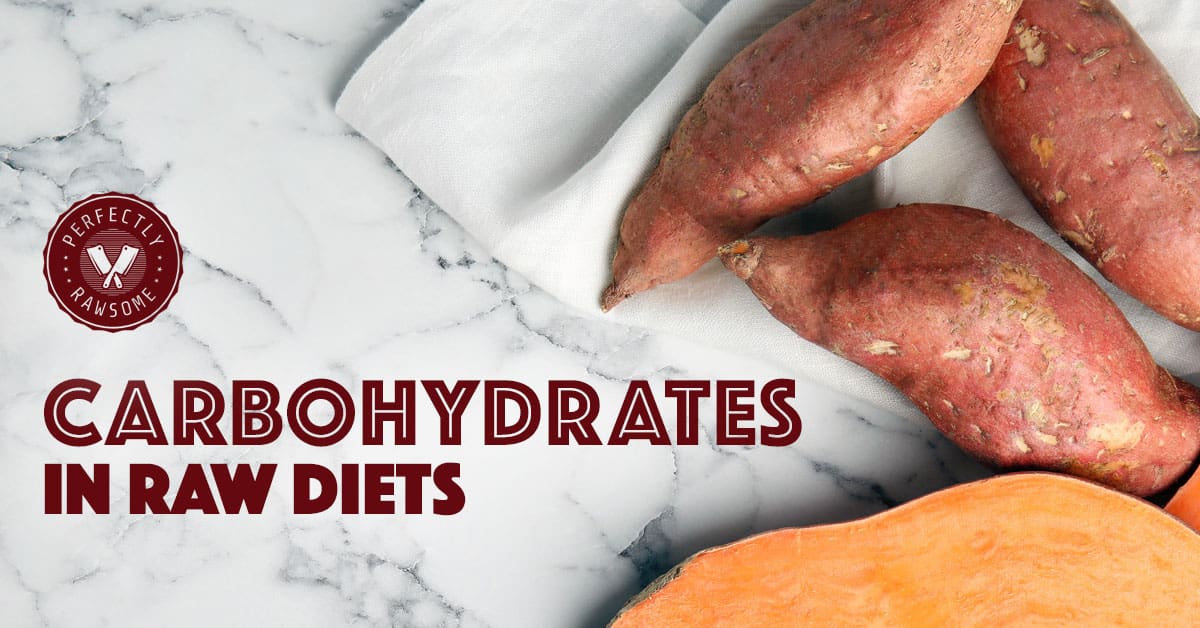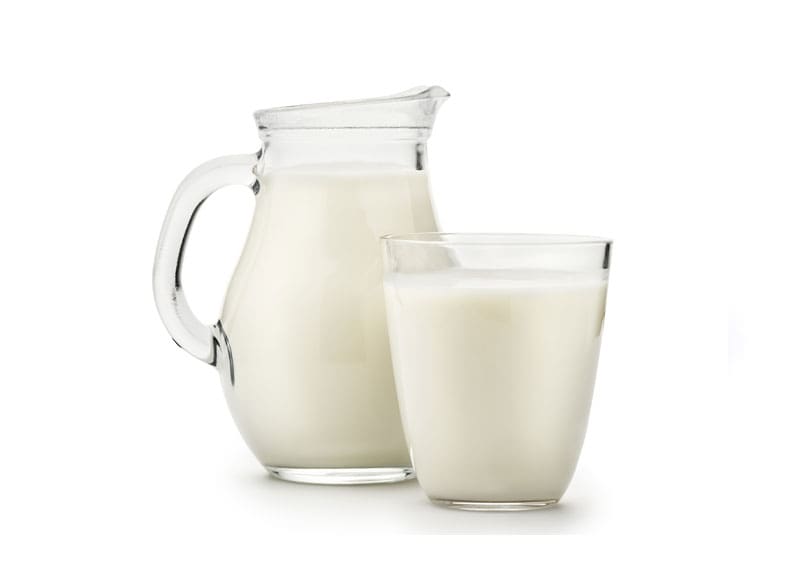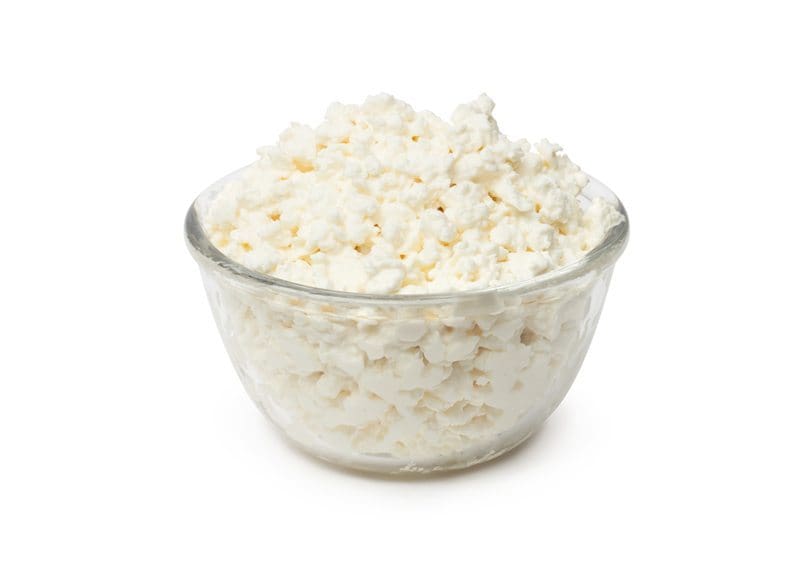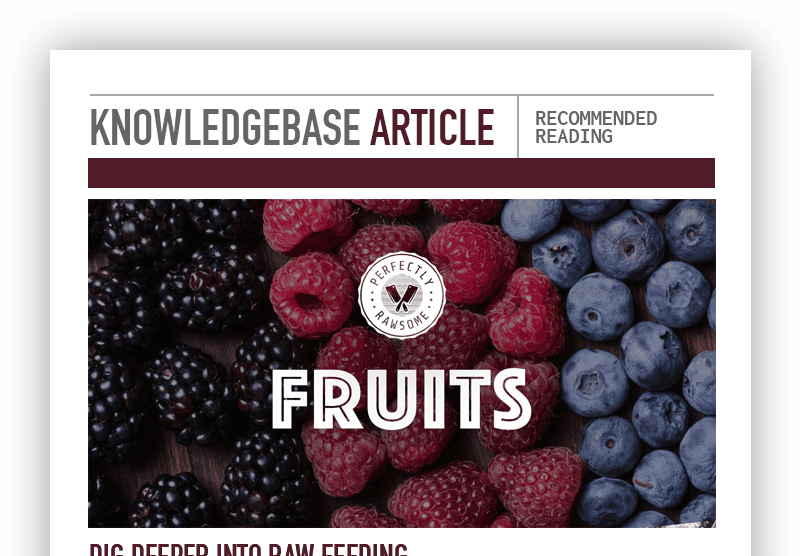The three macronutrients in nutrition are protein, carbohydrates, and fat. Both fat and carbohydrates can supply the body with energy. Carbohydrates differ from protein and fat in that there are no established requirements for dogs and cats; however, there are circumstances where the addition of carbohydrates in the diet are beneficial.
Carbohydrates are found in most plant-based foods where they can provide a quick source of energy. There are multiple types of carbohydrates but they can be broken down into two main categories, simple and complex carbohydrates.
Simple Carbohydrates
Simple carbohydrates are often referred to as simple sugars because their molecular structure only contains one or two sugar molecules.
Complex Carbohydrates
Complex carbohydrates are often referred to as polysaccharides since their molecular structure contains multiple sugar molecules.

Simple Carbohydrates
Simple Carbohydrates are often known as “simple sugars” or “sugar”. There are two types of simple carbohydrates – monosaccharides and disaccharides. These carbohydrates are rapidly broken down by the body and are used as a source of energy.
Monosaccharides
The simplest form of carbohydrates are monosaccharides since their molecular structure contains only one sugar molecule. There are three different types of monosaccharides:
Glucose
All plants create glucose through photosynthesis. It is stored in the plant’s cell walls and is found in all fruits and vegetables. The majority of the glucose in plants is used to create other carbohydrates such as starch and fiber.
Fructose
Fructose is the sweetest of all the carbohydrates. Plants create fructose to attract insects and wildlife that help them pollinate and reproduce. Fructose is particularly abundant in fruit where it has a functional purpose. Animals consume the fruit and eliminate the seeds in their stool which sows the seeds to create new plants!
Galactose
Galactose is found in dairy products. However, it is commonly bonded with glucose to form a disaccharide. It is not common to find galactose in its monosaccharide form in food.
Berries
BARF model raw diets have a ratio to include fruit as a small portion in the diet. While the addition of fruit is not necessary to create a balanced raw diet, fruit provides beneficial antioxidants in addition to the sugars which are metabolized into energy.

Blackberries
Macronutrients
The amount of calories, protein, fat, and carbs are based on 1oz (28g).
| Moisture | 88% |
| Protein | 1.39% |
| Fat | 0.49% |
| Carbohydrate | 9.61% |
Carbohydrates
The amount in 1oz (28g) of raw blackberries.
| Starch | 0 g |
| Fiber | 1.5 g |
| Glucose | 647 mg |
| Fructose | 672 mg |

Blueberries
Macronutrients
The amount of calories, protein, fat, and carbs are based on 1oz (28g).
| Moisture | 84% |
| Protein | 0.74% |
| Fat | 0.33% |
| Carbohydrate | 14.49% |
Carbohydrates
The amount in 1oz (28g) of raw blueberries.
| Starch | 0 g |
| Fiber | 0.7 g |
| Glucose | 1366 mg |
| Fructose | 1392 mg |
Feeding Fruits
Learn more about including fruit in a raw diet for dogs. The addition of fruit provides essential nutrients, beneficial antioxidants, soluble and insoluble fiber to a raw diet for dogs.
Disaccharides
The second form of simple carbohydrates is disaccharides. Their molecular structure only contains two bonded sugar molecules. There are three different types of disaccharides:
Maltose
Maltose is composed of two bonded glucose molecules. It is not naturally occurring in foods with the exception of sprouted grains. When grains begin to sprout, their starches break down and form maltose.
Sucrose
The bonding of one glucose molecule to one fructose molecule creates sucrose. Sucrose is produced by plants for the same reasons as fructose – to attract insects and animals to consume the fruit and aid in the sowing of future plants.
Lactose
Lactose, commonly known as “milk sugar”, is created by bonding one glucose molecule with one galactose molecule. Dairy products are the only animal based foods that supply this form of carbohydrate.
Dairy
Dairy foods such as raw milk, yogurt, kefir, and cottage cheese are included in some raw diets to provide amino acids and fats. These ingredients can prove beneficial in specialized diets for renal disease and uric acid sensitivity due to their unique nutritional profile.
Dairy ingredients provide essential protein and amino acids while remaining very low in phosphorus (ideal for renal disease) and uric acid (ideal for low purine diets). Fermenting dairy products can provide additional benefits in the form of dairy-based probiotics.

Goat Milk
Macronutrients
The amount of calories, protein, fat, and carbs are based on 1oz (28g).
| Moisture | 87% |
| Protein | 3.56% |
| Fat | 4.14% |
| Carbohydrate | 4.45% |
Carbohydrates
The amount in 1oz (28g) of goat milk.
| Starch | 0 g |
| Fiber | 0 g |
| Lactose | 1.2 g (4.39±0.34%) |

Cottage Cheese
Macronutrients
The amount of calories, protein, fat, and carbs are based on 1oz (28g).
| Moisture | 79.79% |
| Protein | 11% |
| Fat | 4.3% |
| Carbohydrate | 3.3% |
Carbohydrates
The amount in 1oz (28g) of cottage cheese.
| Starch | 0 g |
| Fiber | 0 g |
| Lactose | 1.6 g |
Lactose Intolerance
It is not uncommon for dogs and cats to experience digestive issues with dairy-based foods. It is important to introduce these foods slowly and to avoid if any digestive upset occurs.
Complex Carbohydrates
Complex Carbohydrates are often referred to as polysaccharides because they contain multiple sugar molecules. There are three types of complex carbohydrates – starch, glycogen, and fiber. Unlike simple carbohydrates, complex carbohydrates vary in their different qualities.
Starch
Plants create starch in order to store glucose; therefore starch is the storage form of carbohydrates in plants. Starch is stored in seeds in order to provide sufficient energy for the seed to sprout into a new plant. Additionally, starch is found in higher concentrations in roots and tubers to provide the plant with energy to grow and reproduce.
In order for the body to utilize it as an energy source, starchy ingredients must be fully cooked to break down the starch molecules. If foods high in starch are not fully cooked, the starch will resist enzymatic digestion and ferment in the colon (similar to fiber fermentation).
When cooked starches are consumed, they are affected by enzymatic digestion and are metabolized into glucose for energy.
Root Vegetables
Root vegetables are high in carbohydrates, particularly starch. When dietary fat must be minimized, very lean raw diets will benefit from the addition of fully cooked root vegetables. In addition to their beneficial nutrients, these vegetables will provide sufficient amounts of starch for energy in-lieu of fat.
There are many types of root vegetables and the amount of starch they contain will vary. Common root vegetables include sweet potatoes and white potatoes. Other root vegetables will provide starches, however potatoes have the largest amount of starch. It is generally encouraged to choose sweet potato over white potato as their nutritional value is the better choice by comparison.

Sweet Potato, fully cooked
Macronutrients
The amount of calories, protein, fat, and carbs are based on 1oz (28g).
| Moisture | 75% |
| Protein | 2% |
| Fat | 0.15% |
| Carbohydrate | 20.7% |
Carbohydrates
The amount in 1oz (28g) of sweet potatoes.
| Starch | 2 g |
| Fiber | 0.9 g |
| Sugar | 1.8 g |
Prepare Vegetables for Optimal Digestion Article
All vegetables must be prepared by pureeing, cooking, or fermenting because dogs lack the necessary tools to effectively digest and absorb the nutrients in whole vegetables.
Grains
Grains are another form of starchy carbohydrate. While there is some controversy surrounding grains, there are certain situations where they can prove beneficial. Similar to root vegetables, grains provide sufficient amounts of starch for energy which makes them a beneficial ingredient to lean raw diets.
There are many types of grains and the amount of starch will vary between them. Common grains include oats, wheat, barley, quinoa, and rice; however, there are many others in addition to the options listed here.

Oats, fully cooked
Macronutrients
The amount of calories, protein, fat, and carbs are based on 1oz (28g).
| Moisture | 83% |
| Protein | 2.54% |
| Fat | 1.52% |
| Carbohydrate | 12% |
Carbohydrates
The amount in 1oz (28g) of fully cooked oats.
| Starch | 3.2 g |
| Fiber | 0.5 g |
| Sugar | 0.1 g |

Quinoa, fully cooked
Macronutrients
The amount of calories, protein, fat, and carbs are based on 1oz (28g).
| Moisture | 71% |
| Protein | 4.4% |
| Fat | 1.92% |
| Carbohydrate | 21.3% |
Carbohydrates
The amount in 1oz (28g) of fully cooked quinoa.
| Starch | 4.9 g |
| Fiber | 0.8 g |
| Sugar | N/A |
Grain Free is not Carb Free
There is a common misconception that carbohydrates are grains and that “grain free” is the same as “carb free.” While grains are a source of carbs, many other plant-based foods also contain carbohydrates.
Glycogen
All animals have the ability to store excess carbohydrates as glycogen in the liver and skeletal muscles to use as an energy source in times of shortage. However, even though excess carbohydrates are stored in skeletal muscle, they are not found in raw muscle meat because they are rapidly broken down when the animal is slaughtered.
Fiber
While most carbohydrates are broken down into glucose molecules for energy, fiber is the only carbohydrate that cannot be enzymatically digested. Instead, fiber passes through the initial stages of digestion and ferments in the colon.
Fiber is important in digestion, stool regularity, weight management, blood sugar regulation, and more. Fiber has two different forms, soluble and insoluble fiber.
Soluble Fiber
Soluble fiber dissolves in water and creates a gel-like substance. Soluble fiber is known to help regulate glucose levels and is beneficial in times of loose stool.
Insoluble Fiber
Insoluble fiber does not dissolve in water and increases fecal bulk. The increase in fecal bulk is beneficial for correcting constipation, irregular stool consistency and frequency.
Low Glycemic Vegetables
Vegetables rich in the color green are generally a great source of fiber. Additionally, these low glycemic vegetables are virtually starch free which makes them an ideal ingredient for ketogenic diets, weight loss diets, and diets for pets who are struggling with yeast.
In contrast to starches, low glycemic vegetables do not need to be cooked. However, it is recommended to minimally process raw green vegetables to help break down the cellulose wall and aid in digestion.

Broccoli
Macronutrients
The amount of calories, protein, fat, and carbs are based on 1oz (28g).
| Moisture | 89% |
| Protein | 2.82% |
| Fat | 0.37% |
| Carbohydrate | 6.64% |

Collard Greens
Macronutrients
The amount of calories, protein, fat, and carbs are based on 1oz (28g).
| Moisture | 89% |
| Protein | 3.02% |
| Fat | 0.61% |
| Carbohydrate | 5.42% |
Carbohydrates
The amount in 1oz (28g) of collard greens.
| Starch | 0 g |
| Fiber | 1 g |
| Sugar | 0.1 g |
CLOSING COMMENTS
There are several misconceptions about carbohydrates and many pet parents believe carbohydrates are grains. However, it is important to know that grain free is not carbohydrate free and there are multiple types of carbohydrates:
Simple Sugars
Carbohydrates that have a molecular structure of 1-2 sugar molecules are simple sugars and consist of glucose, fructose, galactose, sucrose, maltose, and lactose. These carbohydrates are commonly found in fruit.
Starch
Carbohydrates that consist of numerous glucose units joined by glycosidic bonds are known as complex carbohydrates, and are often called polysaccharides or starches. Starches are commonly found in root vegetables and grains.
Fiber
The roughage portion of plant ingredients that cannot be enzymatically digested is fiber. Fiber is commonly found in all vegetables and fruit but is found in higher concentrations in low glycemic vegetables.



